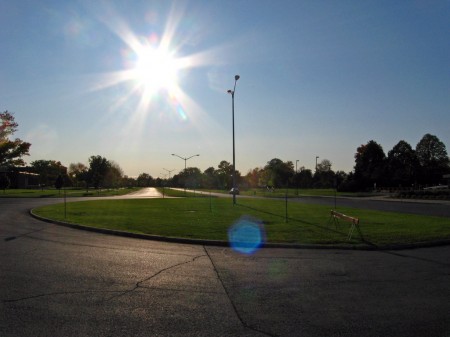In order to begin a sustained transition to a low-carbon global economy, the following things need to occur:
- Political parties and the public at large must accept that stabilizing climate means eventually eliminating net emissions.
- They must understand what the on-the-ground ramifications of this are.
- A price for carbon must be established, with mechanisms for international trading.
- Climate policies must become more rigorous over time, regardless of who is in power.
- Climatic stability must become an axiom of all political ideologies accepted by parties likely to gain power in major emitting states.
- Emissions reductions must take place both during times of strong economic growth and during times of economic difficulty.
Getting to that point, and doing so fast enough to prevent more than 2°C of mean temperature change, will be very challenging indeed – even if the actual sensitivity of the climate to greenhouse gasses is at the low end of the probable range.
It will probably require the rout of the small but highly effective climate change denial industry. In addition, it will require a jump in public imagination to being able to imagine an attractive low-carbon future. Either alternative or in addition, it will also required increased awareness of just how bad climate change could be. The Meteorological Office of the United Kingdom predicts that a business-as-usual course of emissions until 2050 would lead to 5.5°C to 7.1°C of temperature increase by 2100. For context, the IPCC projects that a temperature rise of 3.5°C to 7.1°C would place 48% to 100% of all species at risk of extinction. My guess is that the upper bound doesn’t include microorganisms, but it would still be pretty frightening if it only included multi-cellular beings. For the same temperature range, the predicted likelihood of “initiating irreversible melt of the Greenland ice sheet” is 85% to 100% and the “percentage of mortality in tolerant coral species” is 90% to 100%.
Here’s hoping that political consensus comes together soon… The frequent refrain of ‘balancing’ economic growth with environmental protection becomes insane when these kinds of ecological consequences are possible.


“The Meteorological Office of the United Kingdom predicts that a business-as-usual course of emissions until 2050 would lead to 5.5°C to 7.1°C of temperature increase by 2100. For context, the IPCC projects that a temperature rise of 3.5°C to 7.1°C would place 48% to 100% of all species at risk of extinction.”
Sources?
World in Transition – Climate Change as a Security Risk
German Advisory Council on Global Change
Without resolute counteraction, climate change will overstretch many societies’ adaptive capacities within the coming decades. This could result in destabilization and violence, jeopardizing national and international security to a new degree. However, climate change could also unite the international community, provided that it recognizes climate change as a threat to humankind and soon sets the course for the avoid-ance of dangerous anthropogenic climate change by adopting a dynamic and globally coordinated climate policy. If it fails to do so, climate change will draw ever-deeper lines of division and conflict in international relations, triggering numerous conflicts between and within countries over the distribution of resources, especially water and land, over the management of migration, or over compensation payments between the countries mainly responsible for climate change and those countries most affected by its destructive effects.
Related:
Climate: integrated left or post-partisan?
June 15, 2010
Response to Hank — Building a pragmatic climate protection movement